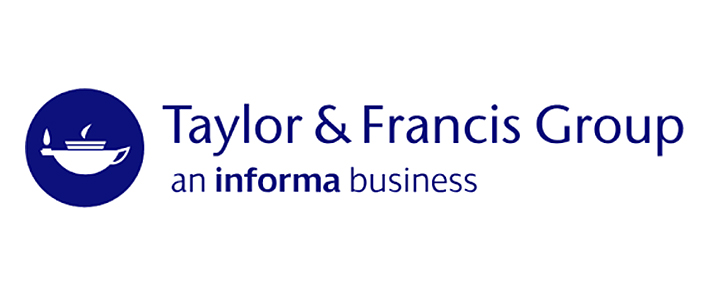MARC details
| 000 -LEADER |
|---|
| fixed length control field |
04422nam a22002657a 4500 |
| 003 - CONTROL NUMBER IDENTIFIER |
|---|
| control field |
ISI Library, Kolkata |
| 005 - DATE AND TIME OF LATEST TRANSACTION |
|---|
| control field |
20241003171500.0 |
| 008 - FIXED-LENGTH DATA ELEMENTS--GENERAL INFORMATION |
|---|
| fixed length control field |
241001b |||||||| |||| 00| 0 eng d |
| 040 ## - CATALOGING SOURCE |
|---|
| Original cataloging agency |
ISI Library |
| Language of cataloging |
English |
| 082 04 - DEWEY DECIMAL CLASSIFICATION NUMBER |
|---|
| Edition number |
23 |
| Classification number |
006.31 |
| Item number |
Su942 |
| 100 1# - MAIN ENTRY--PERSONAL NAME |
|---|
| Personal name |
Das, Suchismita |
| Relator term |
author |
| 245 ## - TITLE STATEMENT |
|---|
| Title |
Dimensionality Reduction for Data Visualization and Classification/ |
| Statement of responsibility, etc |
Suchismita Das |
| 260 ## - PUBLICATION, DISTRIBUTION, ETC. (IMPRINT) |
|---|
| Place of publication, distribution, etc |
Kolkata: |
| Name of publisher, distributor, etc |
Indian Statistical Institute, |
| Date of publication, distribution, etc |
2023 |
| 300 ## - PHYSICAL DESCRIPTION |
|---|
| Extent |
xxii, 169 pages; |
| 502 ## - DISSERTATION NOTE |
|---|
| Dissertation note |
Thesis (Ph.D.)- Indian statistical Institute, 2023 |
| 504 ## - BIBLIOGRAPHY, ETC. NOTE |
|---|
| Bibliography, etc |
Includes bibliography |
| 505 0# - FORMATTED CONTENTS NOTE |
|---|
| Formatted contents note |
Explicit maps for manifold learning -- Nonlinear dimensionality reduction for visualization -- Feature selection preserving class & cluster structures -- Class-specific and Rule-specific feature selection |
| 508 ## - CREATION/PRODUCTION CREDITS NOTE |
|---|
| Creation/production credits note |
Guided by Prof. Nikhil R. Pal |
| 520 ## - SUMMARY, ETC. |
|---|
| Summary, etc |
In this thesis, we identify a few gaps in the existing methods of dimensionality reduction for data visualization and classification and propose some solutions to those as summarized below. Most of the data visualization methods do not learn any explicit function to project high dimensional data to a lower dimension. To overcome the difficulty associated with the absence of an explicit map, in Chapter 2, we propose a framework to estimate explicit maps for data visualization in a supervised setting. The quality of output of any regression-type system depends on the quality of the target data. However, even for simple data, sometimes the target data for visualization may be severely distorted. We present a framework that can significantly correct such distortions in the output for data visualization. For any supervised data visualization method the availability of target data is indispensable, which limits the applicability of such methods. Another problem with most of the methods is that they always produce some output given any input, even when the test input is far from the “sampling window” of the training data. In Chapter 3, using a fuzzy rule-based system (FRBS), we propose an unsupervised approach to learn explicit maps for data visualization that addresses the previously mentioned issues. The proposed method can project out-of-sample instances in a straightforward manner. It can also refuse to project an out-of-sample instance when it is far away from the sampling window of the training data. We have demonstrated the generality of the proposed framework using different objective functions for learning the FRBS. When a data set has significant differences between its class and cluster structure, features selected considering only the discrimination between classes would lead to poor clustering performance. Similarly, features selected considering only the preservation of cluster structures would lead to poor classification performance. To address this issue, in Chapter 4, we propose a neural network-based feature selection method that focuses both on class discrimination and structure preservation. For large datasets, to reduce the computational overhead we propose an effective sample-based method. When a data set has class-specific characteristics, selecting a single feature subset for the entire data set may not characterize the data correctly, although the classifier performance may be satisfactory. To address this, in Chapter 5, we have proposed class-specific feature selection (CSFS) schemes using feature modulators embedded in a fuzzy rule-based classifier. The parameters of the modulators are tuned by minimizing a loss function comprising classification error and a regularizer to make the modulators completely select or reject features in a class-specific manner. Our method is free from the hazards of most of the existing CSFS methods, which suffer due to the use of onevs- all strategy. We have extended the CSFS scheme so that it can monitor class-specific redundancy between selected features. We note here that data from a particular class may have multiple clusters and different clusters may be effectively defined by different subsets of features. To address this, finally, our CSFS framework is generalized to a rule-specific feature selection framework. |
| 650 #4 - SUBJECT ADDED ENTRY--TOPICAL TERM |
|---|
| Topical term or geographic name as entry element |
Artificial Intelligence |
| 650 #4 - SUBJECT ADDED ENTRY--TOPICAL TERM |
|---|
| Topical term or geographic name as entry element |
Machine Learning |
| 650 #4 - SUBJECT ADDED ENTRY--TOPICAL TERM |
|---|
| Topical term or geographic name as entry element |
Systems, schools, theories |
| 856 ## - ELECTRONIC LOCATION AND ACCESS |
|---|
| Uniform Resource Identifier |
<a href="http://dspace.isical.ac.in:8080/jspui/handle/10263/7427">http://dspace.isical.ac.in:8080/jspui/handle/10263/7427</a> |
| Link text |
Full Text |
| 942 ## - ADDED ENTRY ELEMENTS (KOHA) |
|---|
| Source of classification or shelving scheme |
Dewey Decimal Classification |
| Koha item type |
THESIS |


























